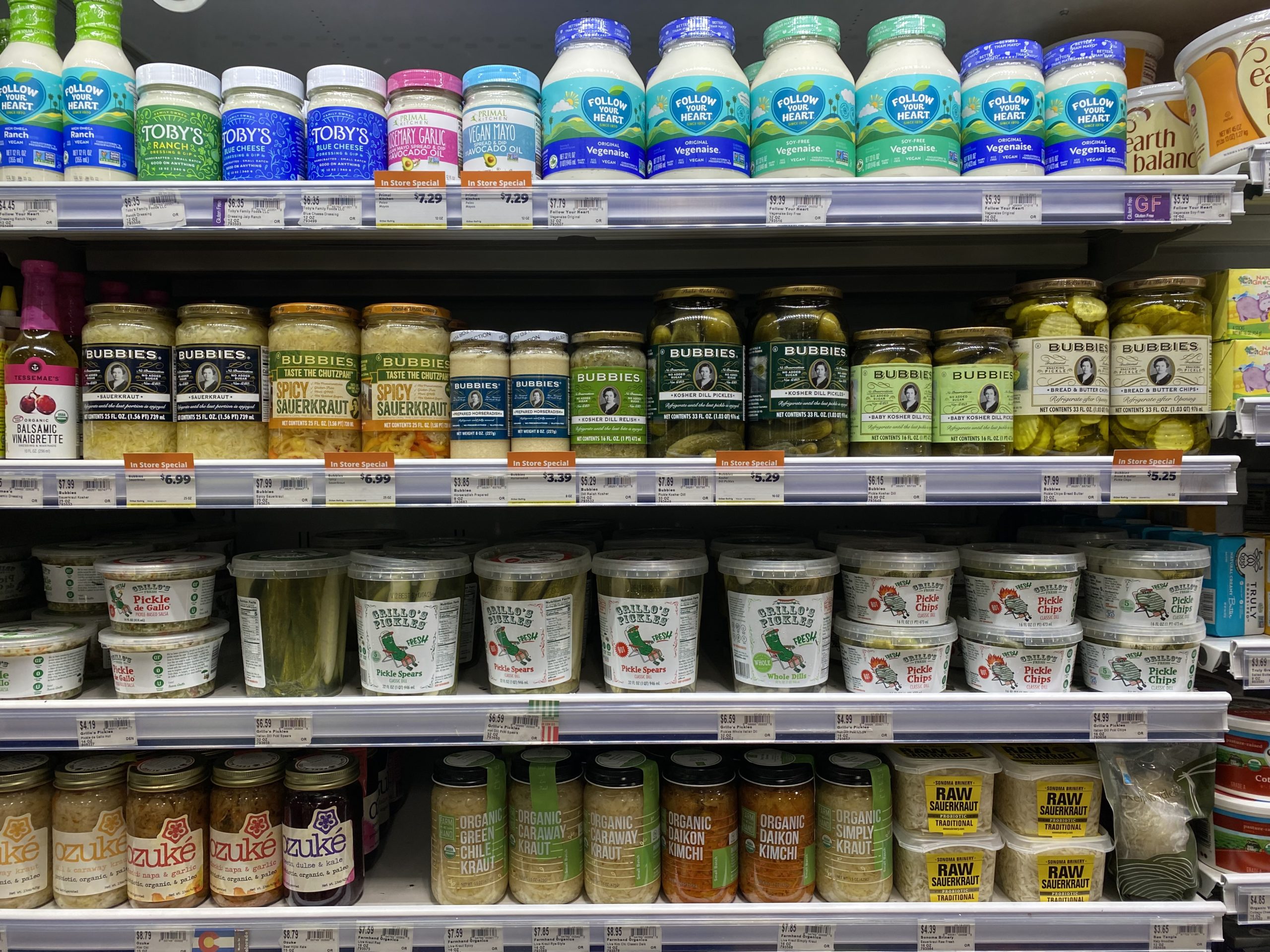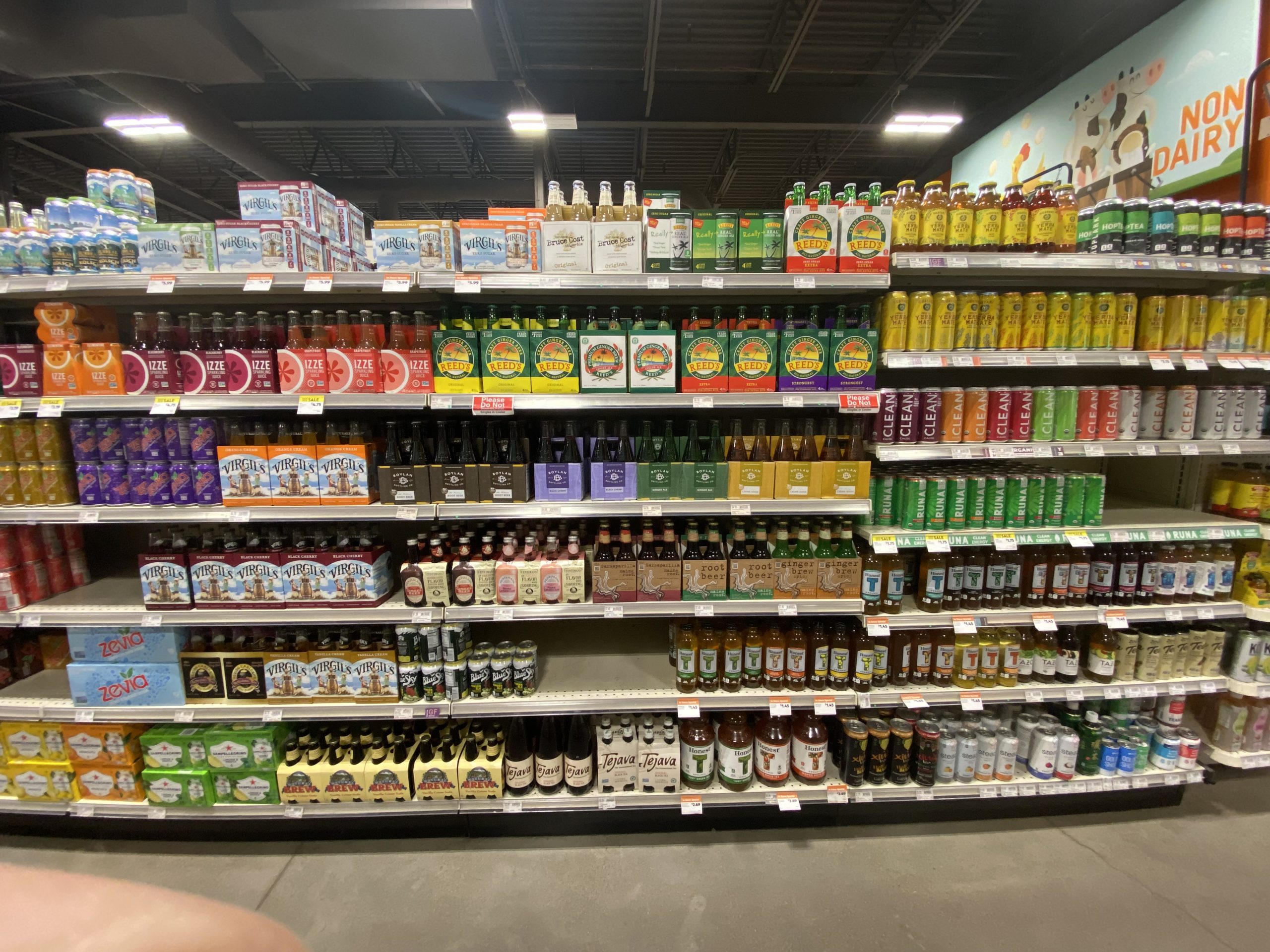Manufacturers, retailers anticipate dollar share gains as 2021 winds down, survey finds
Amid supply chain snags and surging costs, grocery manufacturers and retailers expect price increases to spur dollar sales growth heading into next year, new research shows.
Six in 10 manufacturers and seven in 10 retailers think consumer packaged goods (CPG) dollar sales will rise during the holiday buying period, according to the research “Outlook October 2021” a grocery industry report that was released October 25th. Of the companies surveyed, 63% of manufacturers and 81% retailers said price hikes will be the top driver of year-over-year dollar sales growth for 2021.
Expectations diverge, however, beyond the year-end outlook and the impact of escalating prices, the study found. While 72% of retailers polled forecast grocery dollar sales growth in the 2021 fourth quarter, 58% expect the uptick to carry into the 2022 first quarter, whereas 62% of manufacturers project both Q4 2021 and Q1 2022 growth.
Likewise, excluding price increases, 47% of manufacturers cite improved supply and 39% name elevated at-home consumption as dollar sales growth catalysts, compared with 35% and 62%, respectively, among retailers. Interestingly, manufacturers pointed to distribution gains (33%) and innovation (32%) as growth drivers, while none of the retailers surveyed cited those factors.
Looking ahead for the next six months, 24% of grocery retailers polled expect foot traffic to “somewhat increase” and 5% anticipate a decline. On the plus side, 6% project basket size to “substantially increase” and 50% expect it to “somewhat increase,” with only 3% forecasting a decrease.
 “Closing out the year and looking ahead to the first quarter of 2022, consumer packaged goods manufacturers and grocery retailers are predicting continued sales growth as they navigate rising costs and supply chain challenges, rethink in-store space allocation and focus on investments in digital commerce,” said the report, based on online surveys of 79 CPG manufacturers and 36 grocery retailers in September.
“Closing out the year and looking ahead to the first quarter of 2022, consumer packaged goods manufacturers and grocery retailers are predicting continued sales growth as they navigate rising costs and supply chain challenges, rethink in-store space allocation and focus on investments in digital commerce,” said the report, based on online surveys of 79 CPG manufacturers and 36 grocery retailers in September.
To offset rising inflation, 89% of manufacturer respondents said they aim to raise list prices, and 92% already have taken or plan first (51%), second (25%) and third (16%) increases. Just 5% indicated they don’t plan price increases.
Other strategies cited by manufacturers to counter higher costs included reduced trade spending (55%), supply chain efficiency investments (43%), SKU reduction (22%), pack size changes (20%), formula changes (9%), more outsourcing (9%), and scaled-back innovation efforts and/or product introductions (7%).
Most of manufacturers’ price elevations are under double digits, with 55% of companies surveyed hoisting prices 6% to 10% and 34% enacting 1% to 5% hikes across first, second and third increases.
“The vast majority of manufacturer price increases (more than 80%) are coming in the form of list price hikes, more so for second and third price bumps,”. “The price jumps are significant: Whether taking their first, second or third price increase, a majority of manufacturers raised their prices by at least 6%. At a third price increase, a full one-fifth are taking hikes of 11% to 15%.”
Unsurprisingly, the higher prices are trickling down to consumers. Three-quarters of manufacturers reported that 50% to 100% of their raised prices show up at the shelf across first, second and third rounds of increases.
“Most manufacturers taking price hikes (close to 80%) saw at least half — and often much more — of each price increase reflected at the shelf,” .
“With a third increase, a full one-fourth of manufacturers saw the total increase reflected at retail.”
Shoppers already have seen fewer in-store and online deals during the COVID-19 pandemic, as grocery suppliers and retailers grappled with inventory shortages. The latest supply-chain challenges stand to bring more of the same. Over the next six months, 52% of manufacturers plan to reduce trade promotions “a little” and 17% plan to do so “a lot” versus the pre-pandemic period, according to the study. Seventeen percent expect no changes to promotions, while 13% plan small increases. Only 1% aim to step up promos “a lot.”
Manufacturers named supply constraints (57%), funding shifts to digital investments (51%) and cost increases (49%) as the top reasons for scaling down trade promotions. Another 37% said they’re trying to “be more surgical” with promos because of inflation, and 31% are finding promos to be less effective.
“Three-fourths of manufacturers and two-thirds of retailers say they’ll be changing their promotion strategy,” the report noted. Manufacturers looking to boost promos over the next six months cited retailer partnerships (60%), competitive pressure (50%) and increased innovation support (40%) as the main reasons for doing so.
At the root of the current volatile environment are supply issues. Among manufacturers polled, 93% identified transportation and 90% named manufacturing labor as the primary challenges, followed by raw materials (75%), packaging (63%), distribution (56%), chargebacks (30%), retail labor (27%) and safety protocols (13%).
Thirty-four percent of grocery manufacturers expect a more than 90% supply level for the 2021 fourth quarter, and 51% anticipate that level in the 2022 first quarter. Retailers aren’t as positive: None of those surveyed expect a +90% supply level for Q4 — 45% forecast a 71% to 80% level — while 10% think they’ll reach over 90% supply for Q1, with 48% anticipating an 81% to 90% level.
After a tumultuous year and a half, manufacturers are more optimistic than retailers when projecting level of supply for the next two quarters,” the report said. “Widespread knowledge of supply chain challenges are likely to lead retailers and consumers to alter their shopping behavior, especially around the holiday shopping season.”
In expectation of such changes, retailers are rethinking their in-store and online space allocations for product categories. Segments slated to see increased space include fresh foods (cited by 55% of retailers), beverages (33%), alcoholic beverages (30%), refrigerated foods (19%), frozen foods (15%) and home care (12%), health care (8%), center store groceries (7%), general merchandise (4%) and beauty care (4%).
Categories targeted for brick-and-mortar and digital space reductions include tobacco (cited by 42% of retailers), general merchandise (38%), beauty care (23%), center store groceries (11%), health care (4%) and home care (4%).
Twelve percent of retailers said they aim to reduce their overall store footprint. In turn, 67% reported increasing their digital investments “a lot” and 30% did so “a little,” while 70% boosted in-store merchandising “a little” and just 7% did so “a lot.”
“The recent decline in new cases of COVID in the U.S. has spurred cautious optimism surrounding the pandemic’s lifecycle and an economic recovery.” “But grocery manufacturers and retailers have learned to expect the unexpected, and their predictions, changing strategies and investments for the next six to 12 months reflect that mindset.”
More than half of retailers are expanding their fresh category offering. Four in 10 plan to trim space devoted to tobacco and general merchandise.
Manufacturers say retailers that are winning online are leveraging new shopper fulfillment options, are focusing on online shopper experience and services, and have a retail media network. Nearly all retailers surveyed say they have increased their digital investments this year compared to 2019.
Edited from a story by
